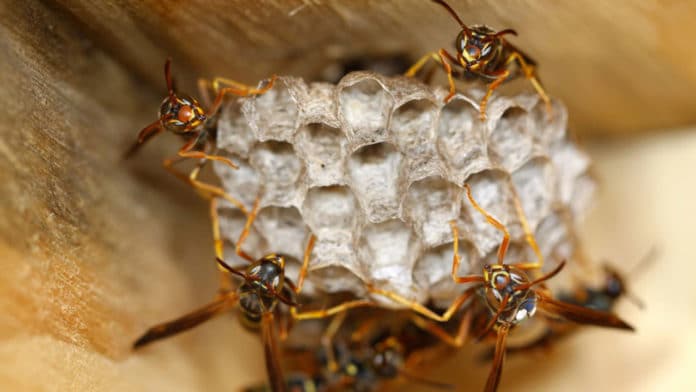Humans have long been fascinated by animal cognition, but little research has addressed the dynamics of the evolution of cognitive traits.
A new study has examined population genomic signatures of cognitive adaptation in Polistes fuscatus paper wasps and indicated that the species rapidly evolved facial recognition abilities. The research highlights how intelligence evolves in general, which has implications for many other species – including humans.
Michael Sheehan, the Nancy and Peter Meinig Family Investigator in the Life Sciences, said, “The big question we want to explore is how complex traits evolve. What is the mode and tempo of cognitive evolution? The shocking conclusion here is that the most intense selection pressures in the recent history of these wasps have not been dealing with climate, catching food, or parasites, but getting better at dealing with each other. That’s pretty profound.”
Many vertebrates can perceive individual faces, in any event in certain conditions, yet among insects, facial recognition is quite uncommon. Scientists in this new study investigated how and when this ability evolved by dissecting examples of genetic variation within species.
Sheehan said, “It’s kind of like 23andMe, but with paper wasps.”
Several species of insects can recognize faces share one trait: communal societies with multiple queens. In communal groups with a single queen, similar to honeybee provinces, the jobs are clear, and every individual knows its place. Be that as it may, paper wasps may have at least five queens in a single nest, and facial acknowledgment helps these queen’s negotiations with each other.
The sovereigns structure a chain of importance, with the predominant queen creating the vast majority of the posterity. Subordinate queens can remain and lay a couple of eggs or leave to fabricate their own homes. However, smaller nests are bound to be attacked, get stolen, or die off.
Sheehan said, “If you’re subordinate in the group, you’re giving up a lot of chance to lay eggs. There are benefits to working in a group but also costs to the individual. In these societies where multiple queens are interacting with one another, that’s where recognition becomes so useful.”
In their battle for dominance, queens fight with one another. By recognizing each other’s faces, the queens can keep track of who they’ve already beaten, or been beaten by, which lessens aggression in the nest.
To study the evolutionary history of the wasps, scientists assembled genomes for Polistes fuscatus and two of its closest relatives. They observed the genetic variation across the wasps’ genomes while searching for DNA signatures that showed patterns of recent positive selection. When positive selection is strong and recent, it leaves a distinct mark, appearing as a long stretch of DNA with little variation among individuals in the population.
Sheehan said, “We were looking for sections of DNA that lack diversity. That suggests there are times when a new mutation appears that’s so beneficial, it sweeps the population. The longer the stretch of DNA lacking diversity, the more recent and intense selection would have to be.”
The analysis revealed that the strongest signatures of selection were by genes involved in insect vision, learning, and memory – all traits involved in facial recognition.
Scientists performed the same analyses on two closely related paper wasp species that don’t recognize faces to contextualize the study. Those species did not show strong patterns of selection on learning or memory, bolstering the conclusion that individual recognition, a trait unique to P. fuscatus, has been responsible for the distinctive design of selection.
Sheehan said, “Our findings indicated that cognitive evolution is not necessarily incremental. Mutations are happening that can cause big shifts. This suggests the possibility that rapid adaptation of cognitive ability could have been important in other species as well, as a language in humans.”
The study is published Jan. 24 in Proceedings of the National Academy of Sciences.
